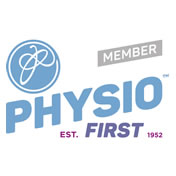Multiple Sclerosis (MS) is an inflammatory disorder of the brain and spinal cord (central nervous system). It is predominantly a disease of the white matter tissue, which includes the nerve fibres that transmit signals around the body to and from the brain and spinal cord.
Each nerve fibre is surrounded by a protective sheath made up of a substance called myelin. In MS, the disease process causes plaques to appear on the myelin sheaths which lead to interruption of the nerve transmissions of those nerve fibres that are affected.
This block of transmission causes symptoms to occur, such as visual problems, muscle spasms, muscle weakness, limb tremors, pain, numbness, tingling, reduced balance, urinary symptoms and fatigue.
What causes MS?
About 1 in 1000 people in the UK develops MS. The disease can affect any age and any individual but is very rare in young children. Common disease onset is around the age of 30, more commonly amongst women than men.
It is thought that MS is an autoimmune disease, which means that an individual’s immune cells, normally designed to attack viruses and bacteria, start to attack the body instead. The trigger for this process is unclear, but one theory is that a virus or environmental factor initiates this autoimmune response in individuals with a certain genetic makeup. In other words, some people may be more prone to developing such a disease due to the way their bodies are programmed. It is also thought that there may be a possible geographical link to the disease.
Diagnosis
A firm diagnosis is not usually made following the first symptoms, as many of the initial symptoms (such as short periods of blurred vision, leg tingling and numbness) can be one-off problems which are linked to other conditions. Often the diagnosis is made after two or more relapses have occurred, as the symptom presentation then becomes more obvious. It is confirmed often by an MRI scan, and occasionally by performing a lumbar puncture, but always in conjunction with an examination and thorough history-taking by a GP / Neurological Specialist.
How does the disease progress?
MS is usually a slow progressive disease, and symptoms may vary hugely between individuals depending upon the severity of the damage and the areas of the central nervous system which are affected. Some people can show few or occasional symptoms, where others are affected more significantly with widespread symptoms and severely impaired function.
Once the disease process is triggered, it normally follows one of the following patterns:
Relapsing-remitting (R&R)
This pattern is characterised by relapses (exacerbations) which cause new symptoms to occur. Symptoms may last from a few days up to six weeks, but can also last for up to six months. Symptoms then remit (go away) and during the periods of remission, an individual can fully or partially recover from the deficits of the relapse.
Further relapses and remissions then occur over time – one to two every two years is common. Consistent cycles of R&R over time cause more permanent scarring to the myelin of the nerve fibres which can result in reduced recovery following each relapse. Relapses can flare older symptoms or may result in new ones. After several years of R&R, some symptoms become permanent as the damage to the nerve fibres themselves occurs.
Secondary Progressive MS (SPMS)
This phase of MS may present a number of years after R&R MS has occurred and is characterised by a gradual worsening of the disease between relapses. The periods of remission become shorter and slowly the relapses merge into a general progression of deterioration. Some individuals in this phase may experience good and
Primary Progressive MS (PPMS)
This pattern occurs in about 1 in 10 people suffering with MS. It is characterised by a gradual progression of the disease from the outset, without any initial R&R course. Symptoms gradually worsen from the outset and do not recover. As with SPMS, there may be good and bad periods. Damage is confined more to the spinal cord than the brain and therefore symptoms with PPMS are less often cognitive and more physical.
Benign MS (BMS): This form of the disease affects less than 1 in 10 MS sufferers and is characterised by only a few relapses in a lifetime where no symptoms remain permanent.
Physiotherapy for MS
The interruption of normal nerve signals from the brain to the limb muscles often means that movement becomes more difficult, balance and sense of position is affected and, in turn, functional ability becomes compromised.
Research evidence clearly shows that specialist physiotherapy input is vital in containing the effects of MS. This is achieved through a programme of muscle pattern re-training, stability and strengthening work, and various manual therapy techniques to reduce pain and spasticity, improve movement and co-ordination, and restore function. Regular physiotherapy input is an important way of managing the disease process and its progression.
Following a thorough assessment of the individual and an analysis of the particular areas of difficulty, a specific treatment and rehabilitation programme can be established to tackle the presenting symptoms and functional problems. The individual’s progress can then be monitored and the rehabilitation programme adjusted to respond to any changes in their condition as soon as they become apparent.
The aims of physiotherapy management are to:
- Improve and maintain joint mobility, limb control, balance and co-ordination
- Increase and maintain general muscle strength
- Reduce muscle spasm and associated pain
- Re-educate and maintain normal patterns of movement
- Maximise function
- Improve general fitness and exercise tolerance
- Optimise independence and quality of life
Following a relapse, physiotherapy may need to be provided in intense and focused bursts of treatment, in order to tackle any newly-presenting symptoms and to optimise recovery. Ongoing exercises and rehabilitation may then be required on a maintenance basis during periods of remission, but continuous independent home exercises are strongly encouraged to ensure that the full potential is achieved and maintained.
At Yorkshire Neuro Physiotherapy, rehabilitation sessions over the short or long term can be arranged and, wherever possible, the inclusion of carers and relatives in the physiotherapy process is encouraged as this is considered an important part of maximising neuro-rehabilitation. Our specialist team can provide physiotherapy assessment and treatment sessions within your own home or care home if this is more suitable for you, or you can arrange a physiotherapy appointment at one of our designated neuro-rehabilitation clinics.
If you would like to find out more about our services, our therapists and what we can offer you, please feel free to contact our team and we can discuss your needs and answer any questions that you may have.





